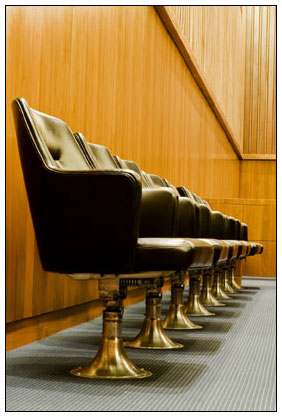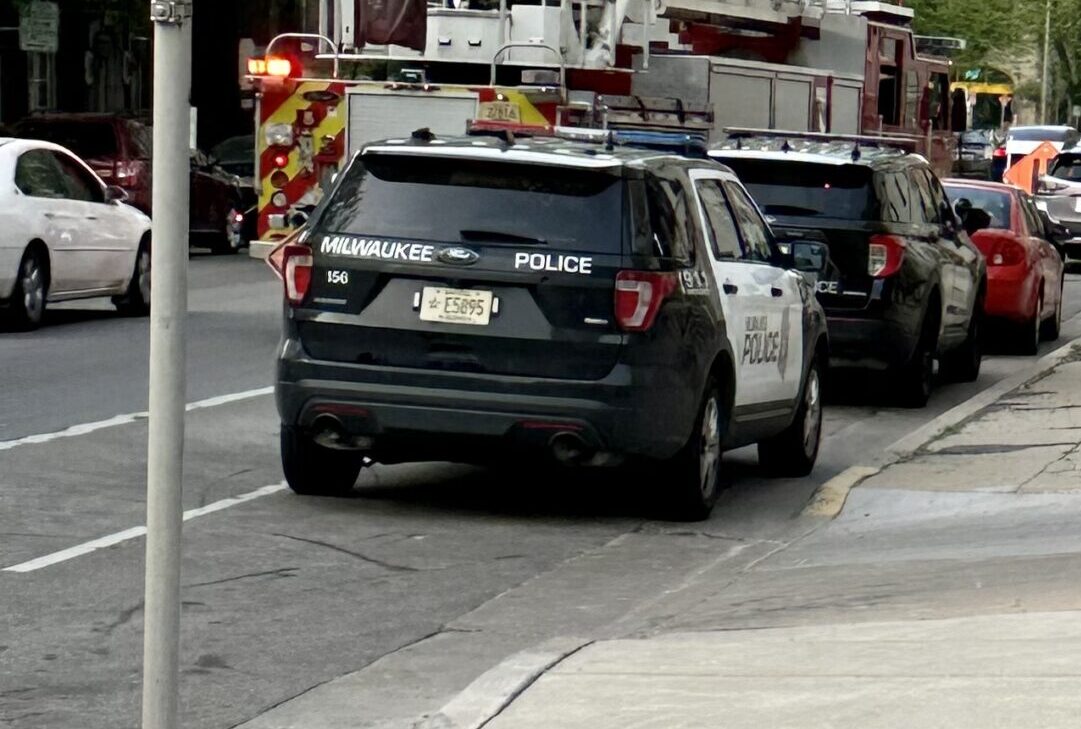Trial lessons: Juries see more than just the evidence
By: SYLVIA HSIEH, BridgeTower Media Newswires//September 5, 2012//
Trial lessons: Juries see more than just the evidence
By: SYLVIA HSIEH, BridgeTower Media Newswires//September 5, 2012//
Don’t wear a pinky ring. Don’t wear monogrammed shirts. Don’t drive your fancy sports car to the courthouse.
These are some of the rules lawyers follow if they don’t want to alienate jurors on Day 1.
Why? Because juries are taking note of everything that happens at trial, not just the evidence.
In a high-stakes trial in 2009 over price-fixing in the Sunday coupon business, the jury’s post-trial comments were as notable as its $300 million award.
Jurors repeatedly pointed out the work of a lawyer on the plaintiff’s side – an associate responsible for organizing trillions of pages of discovery during the 8-week trial and having key deposition testimony at her fingertips for cross-examination of each witness – even though she never questioned a witness or addressed the jury.
“She worked like an air traffic controller, organizing communications between the lawyers and paralegals,” said Eric Oliver, a jury consultant with Metasystems in Canton, Mich. who worked on the plaintiff’s case. “The jurors all talked about how the [plaintiff’s team] could never have gotten through the trial without her. Another juror went on to say that it was clear people on our side were not just well organized but liked each other and got along well. It had a huge impact.”
While lawyers can control their own courtroom presence, others in the courtroom may need to be coached on proper demeanor so an inappropriate smile or a misinterpreted stare doesn’t doom a case.
Jurors are driven by more than curiosity and boredom when keeping track of every blink and raised eyebrow during a trial.
“Jurors want to make the right decision. They’re taking in everything going on in a courtroom to figure out who is winning and who is losing,” says Alison Bennett, a jury consultant with Bloom Strategic Consulting in Dallas.
In a recent civil trial, Bennett debriefed jurors to find they had been tracking every objection and keeping a scorecard of the judge’s rulings – it was one way they could try to figure out which way they thought the judge was leaning.
The jury is also looking to see who is winning an exchange between a lawyer and a witness.
Bennett coaches witnesses not to show anger or hostility, because jurors will read it as losing an exchange.
The same advice applies to lawyers.
“If you see the attorney is very rude and losing a bit of control, it feels like he’s losing. If the witness gets hostile and angry, then the jury will think the attorney has a point,” Bennett said.
The hostility of a witness was one of the keys to the defense strategy in the murder trial of Casey Anthony for the death of her daughter Calee.
According to Anthony’s defense attorney, Jose Baez, the jury saw something that television viewers didn’t.
“George Anthony (Casey’s father) walked by me and stared me down and gave me a menacing look as if he were going to attack me. I was facing the jury and I looked at the eyes of a couple of jury members. They reacted to that. Everyone in there could sense his hostility and defensiveness,” said Baez.
In addition to the substance of the testimony when Baez challenged Anthony on gas cans containing duct tape also found on Calee’s corpse, the difference in demeanor told the story Baez wanted to tell.
“The jury saw me being very composed and professional and him being hostile and angry. It sends a message that this person is being defensive and perhaps not telling the truth,” said Baez.
‘A trial is a production’
While trial lawyers are buried in the evidence and the record, jurors are weighing the credibility of things that will never make their way onto the transcript.
Nowhere is this more true than in a criminal trial, where all eyes are on the defendant even if he or she never testifies.
Many defense lawyers try to make their client less threatening by making physical contact as much as possible, finding any excuse to sit nearby, pat the client on the arm or give the client a hug.
“A trial to a certain extent is a production,” said Richard Gabriel, a trial strategist with Decision Analysis in Los Angeles.
Gabriel has worked on the defense teams for such notorious clients as Casey Anthony and Heidi Fleiss (whose penchant for rolling her eyes and scoffing as witnesses testified against her had to be reined in).
He coaches criminal defendants by telling them, “I want you to disappear. I want you to be so innocuous and so nondescript that the jury can focus on what the defense wants it to focus on, whether it’s police misconduct or bad forensics.”
Veteran trial lawyer James B. Lees Jr. has another tip for humanizing a criminal defendant.
In a murder case against the CEO of a coal company for allegedly ordering a bodyguard to kill his mistress’s boyfriend, Lees found a reason, any reason, to have the defendant get off the witness stand.
“When a defendant is down off the witness stand, he’s talking directly to the jury box, drawing on a blackboard,” said Lees, who practices at Hunt & Lees in Charleston, W.Va. “He’s just another human being like me and you.”
The CEO was acquitted.
Other times, a client’s demeanor cannot be coached.
In defending another first-degree murder case, in which William David Holliday claimed self-defense in the shooting of his wife, Lees asked the voir dire panel if there were any type of behavior Holliday might exhibit in court that would make them assume he was guilty.
As Holliday sat behind Lees nervously twisting a pen, one juror said he would hold it against the defendant “if he fidgets or looks nervous, pretty much like what he’s doing right now.”
The defendant instantly stopped fidgeting, tossed the pen over his shoulder and folded his hands on the table.
Everyone broke into laughter.
“It was not a bad way to start a murder trial,” which ended in acquittal, Lees said.
Legal News
- Former Wisconsin college chancellor fired over porn career is fighting to keep his faculty post
- Pecker says he pledged to be Trump campaign’s ‘eyes and ears’ during 2016 race
- A conservative quest to limit diversity programs gains momentum in states
- Wisconsin prison inmate pleads not guilty to killing cellmate
- Waukesha man sentenced to 30 years for Sex Trafficking
- 12-year-old shot in Milwaukee Wednesday with ‘serious injuries’
- Milwaukee man convicted of laundering proceeds of business email compromise fraud schemes
- Giuliani, Meadows among 18 indicted in Arizona fake electors case
- Some State Bar diversity participants walk away from program
- Wisconsin court issues arrest warrant ‘in error’ for Minocqua Brewing owner
- Iranian nationals charged cyber campaign targeting U.S. Companies
- Facing mostly white juries, are Milwaukee County defendants of color truly judged by their peers?
WLJ People
- Power 30 Personal Injury Attorneys – Russell Nicolet
- Power 30 Personal Injury Attorneys – Benjamin Nicolet
- Power 30 Personal Injury Attorneys – Dustin T. Woehl
- Power 30 Personal Injury Attorneys – Katherine Metzger
- Power 30 Personal Injury Attorneys – Joseph Ryan
- Power 30 Personal Injury Attorneys – James M. Ryan
- Power 30 Personal Injury Attorneys – Dana Wachs
- Power 30 Personal Injury Attorneys – Mark L. Thomsen
- Power 30 Personal Injury Attorneys – Matthew Lein
- Power 30 Personal Injury Attorneys – Jeffrey A. Pitman
- Power 30 Personal Injury Attorneys – William Pemberton
- Power 30 Personal Injury Attorneys – Howard S. Sicula












